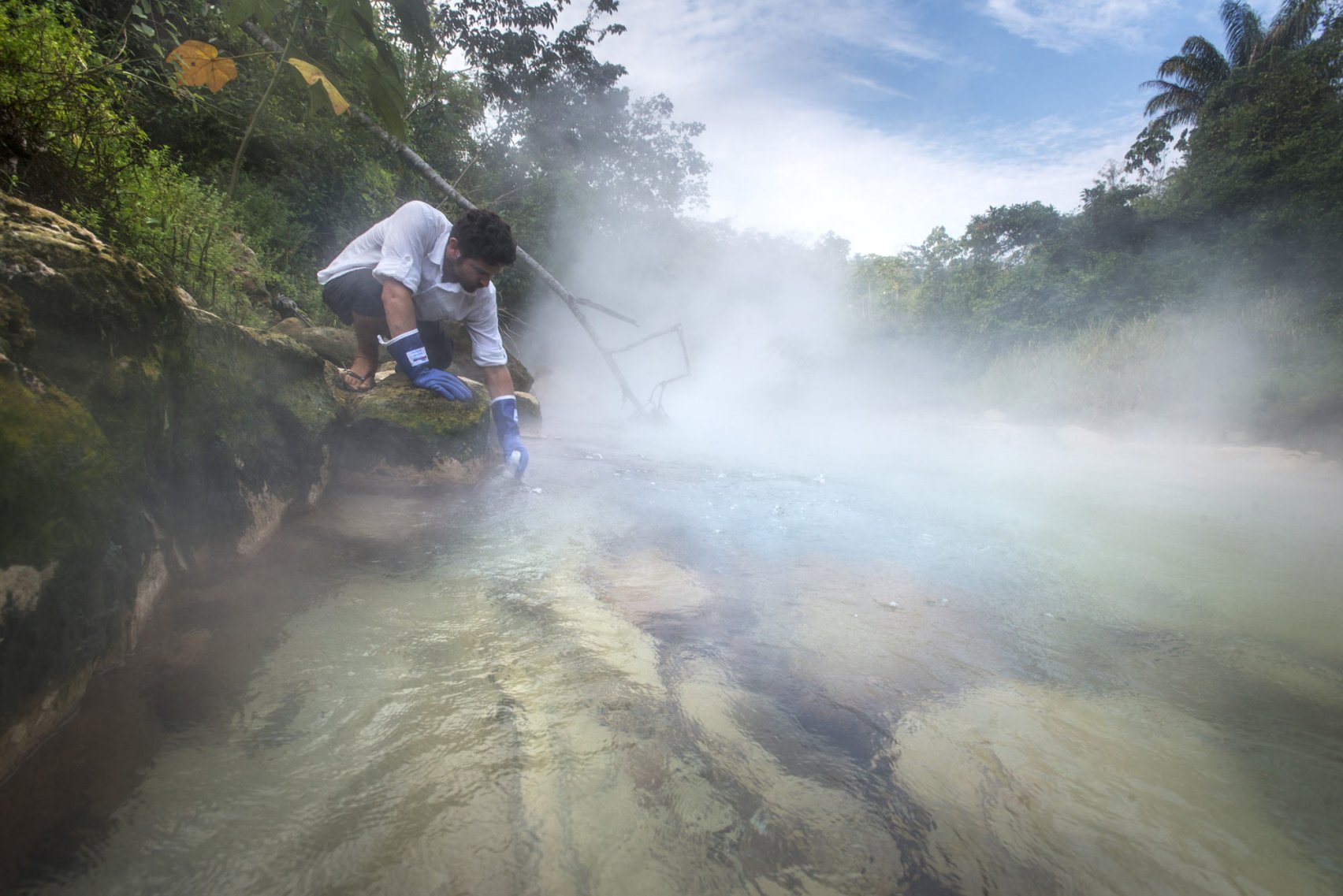For centuries, Peruvian locals have talked about a river in the Amazon that burns so hot it can kill. According to legend, Spanish conquistadors foolishly ventured into the rainforest in search of gold, and the few men that returned told stories of poisoned water, man-eating snakes, and a river that boiled from below.
For Peruvian geoscientist, Andrés Ruzo, the myth had fascinated him since childhood. But it wasn't until he was completing his PhD project on geothermal energy potential in Peru that he began to question whether the river could actually be real.
According to the experts he spoke to, the answer was a unanimous "no" - after all, hot rivers do exist, but they're generally associated with volcanoes, and there are no volcanoes in that part of the country.
But when Ruzo went home over the holidays and asked his family where the myth had come from, his mother told him that the river didn't just exist, she and his aunt had actually swum in it before.
It sounded pretty ridiculous, but in 2011, Ruzo took a chance and hiked into the Amazon rainforest with his aunt, and saw the famed river with his own eyes.
Much to his disbelief, it was steaming hot. "When I saw this, I immediately grabbed for my thermometer," said Ruzo in a TED talk back in 2014. "The average temperature in the river was 86 degrees Celsius, not quite boiling but definitely close enough ... It's not a legend."
The most puzzling part was the sheer size of it. Hot springs aren't uncommon, and thermal pools get to these temperatures in other parts of the world, but nothing even comes close to the scope of the river - it's up to 25 metres wide and six metres deep, and runs burning hot for an incredible 6.24 km.
Add that to the fact that the river is 700 km from the closest volcanic system, and the temperature just didn't make any sense. In fact, it's the only river of its kind anywhere in the world.
With the permission of the Shaman, Ruzo has spent the past five years studying the river, its surrounding ecosystem, and its water in the lab, in the hopes of figuring out what's going on.
 Devlin Gandy
Devlin Gandy
To be clear, Ruzo obviously wasn't the first to discover the river, and as suggested by its indigenous name - Shanay-timpishka, which means "boiled with the heat of the Sun" - he also wasn't the first to wonder what made it so hot.
But his research - backed in part by a National Geographic Young Explorers grant - is finally revealing some of its secrets. It turns out, it's not the Sun that boils the water, but fault-fed hot springs.
Imagine Earth like a human body, with fault lines and cracks running through it like arteries. These 'Earth arteries' are filled with hot water, and when they come to the surface, we see geothermal manifestations - like the boiling river.
Chemical analysis has revealed that the water in the river originally fell as rain. Ruzo now hypothesises that this happens far upstream - perhaps as far away as in the Andes - and along its journey seeps down into the ground, where it's heated up by Earth's geothermal energy. It eventually emerges in the Amazon, at the boiling river.
This means the system is part of an enormous hydrothermal system, the likes of which haven't been seen anywhere else on the planet.
Even more exciting, Ruzo has worked with biologists Spencer Wells and Jonathan Eisen to sequence the genomes of the microbes living in and around the river, and discovered brand new species that are able to survive the heat.
Of course, as fascinating as the river is, it can also be deadly. The water gets so hot that Ruzo has regularly seen animals fall in and slowly start boil to death. "The first thing to go are the eyes," he explained in his TED talk.
Eventually, the animals can no longer swim, and water fills their mouths and lungs, causing them to be cooked from the inside out. Gruesome.
Still, people do actually swim in the river, as his mother claimed, but only after heavy rainfalls when it's diluted with cold water. More often, the water is used to make tea and for cooking.
Ruzo will now continue to study the river and its source. But his main focus now is how to protect the river and its surrounding land - while his results are ready for publication, he's refusing to release many of them until the Peruvian government will guarantee they'll put appropriate conservation measures in place.
"In the middle of my PhD, I realised, this river is a natural wonder," Ruzo told Maddie Stone over at Gizmodo. "And it's not going to be around unless we do something about it."
He's just released a book called The Boiling River on his adventures, and is hoping that by spreading the news about the unique system, people might take on the cause themselves and decide that the site significant enough to save from loggers and developers.
"I don’t like the concept of one person leading this charge - I think it’s about building a community on an international scale," said Ruzo. "The planet’s gotten small, and natural wonders like this are few and far between."
There is intensive research why the river was so hot. One initial hypothesis states that hundreds of years ago thought to be an explosion near the oil fields of the region. However, given hypothesis Ruzo more scientific and convincing. "Water flows from the hot earth fault zones, namely the cracks of the earth, which causes the temperature and heats the water vulume."
sumber:kaskus




0 komentar:
Post a Comment